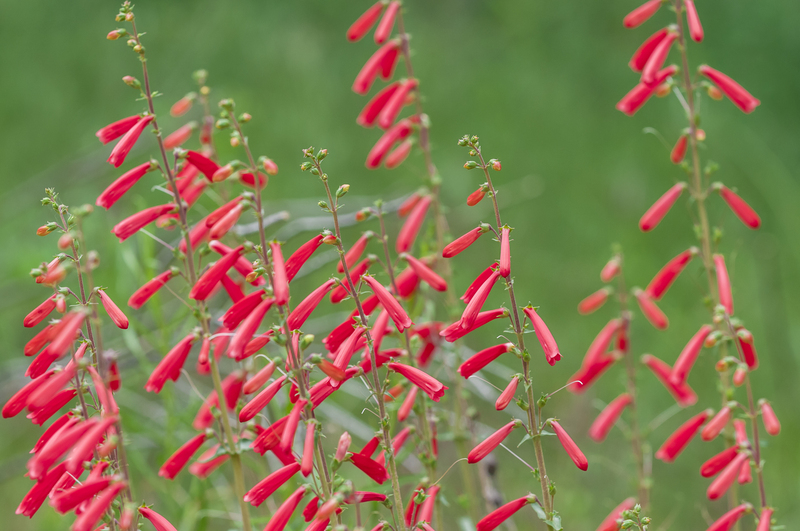Building Resilience in Your Garden Against Weather
Posted on 04/10/2025
Building Resilience in Your Garden Against Weather: An In-Depth Guide
As weather patterns become more unpredictable and extreme, gardeners face mounting challenges. Whether it's unexpected frosts, prolonged droughts, or relentless storms, cultivating a resilient garden is essential to protect your plants, investment, and joy. This comprehensive guide will help you understand and implement effective strategies for building resilience in your garden against weather, enabling your green space to thrive--regardless of what Mother Nature has in store.

Understanding Weather Challenges in the Garden
Every garden is subject to the whims of the weather. With climate change affecting seasonal patterns, gardeners now must contend with:
- Sudden temperature swings
- Intense rainfall and flooding
- Long dry spells and drought conditions
- High winds and storms
- Late or early frosts
Recognizing these risks is the first step in strengthening your garden's defenses and ensuring long-term productivity.
Why Resilience Matters: More Than Survival
Building resilience in your garden is not just about surviving the extremes--it's about ensuring your garden continues to flourish. Adapting your gardening practices to anticipate and mitigate weather-related stress leads to more robust plants, increased yields, and less maintenance in the long run.
Key Strategies for Building Garden Resilience Against Weather
1. Choose Weather-Hardy Plants
Selecting the right plants is foundational in strengthening your garden against weather extremes. Opt for species and cultivars known for their tolerance to your region's challenges. For example:
- Drought-tolerant plants such as lavender, rosemary, or sedum thrive with little water.
- Wind-resistant trees like hawthorn and oak can anchor your yard and protect more delicate specimens.
- Flood-resistant perennials such as daylilies or iris handle periodic torrents with fewer issues.
Visit local nurseries or consult with agricultural extension offices for a list of weather-resilient plants tailored to your area.
2. Prioritize Healthy Soil Structure
Soil health forms the backbone of a resilient garden. Well-structured, organic-rich soil holds water better in droughts and drains efficiently during heavy rainfall, reducing erosion and root rot. To build robust soil:
- Add compost regularly to enhance organic matter and fertility.
- Practice crop rotation and plant cover crops like clover or vetch for natural nutrient replenishment.
- Test pH levels and adjust as needed for your plants' preferences.
Mulching further insulates soil, evens moisture levels, and protects against extreme temperature swings.
3. Strategic Garden Design for Weather Resilience
Smart garden layout reduces your vulnerability to harsh weather. Consider:
- Windbreaks: Create protective barriers using dense shrubs, hedges, fences, or even temporary screens. These minimize wind speed and prevent desiccation or breakage.
- Rain gardens: Install low-lying, planted areas designed to capture runoff and prevent flooding elsewhere.
- Raised beds: Protect roots from excess water and offer better drainage during heavy rains or snowmelt.
- Slope management: Terrace steep landscapes to reduce erosion and water loss.
- Microclimates: Use walls, rocks, or dense foliage to create pockets of shelter for sensitive plants.
A weather-resilient garden design minimizes damage and encourages rapid recovery after events.
4. Build Flexible Water Management Systems
Water is central to garden resilience. Efficiently store and distribute water to safeguard plants during both droughts and deluges:
- Rain barrels: Collect runoff from gutters to water your beds during dry spells.
- Drip irrigation: Systems deliver water directly to roots, conserving water and minimizing fungal issues associated with wet foliage.
- Soaker hoses: Great for borders and rows, especially in drought-prone regions.
- Swales and berms: Alter landscape contours to slow, capture, or redirect excess water.
Building resilience in your garden against weather means adapting to both feast and famine--having solutions for both too much and too little water.
5. Employ Seasonal Protection Techniques
At times, direct protection is necessary to minimize weather stress:
- Row covers and cloches: Shield delicate plants from frost or unseasonable cold snaps.
- Shade cloth: Reduce heat stress and sun scorch during intense periods, especially for tender vegetables.
- Mulch: Keeps soil temperatures stable and suppresses weed competition.
- Temporary windbreaks: Stake sheets, trellises, or plant sunflowers as annual wind buffers.
Proactively implementing these seasonal tools is one of the most effective ways to guard your plants from sudden weather challenges.
Weather-Resilient Gardening: Maintenance and Observation
Monitor Your Garden Closely
Vigilance is key in identifying weather-related problems early. Regularly check for:
- Signs of drought (wilting, dry soil, leaf drop)
- Water-logging after storms (yellowing, root rot)
- Wind damage (broken stems, stripped foliage)
- Frost burn or sun scorch
Taking fast action speeds recovery and limits losses.
Repair and Adjust Quickly
After a weather event, remove damaged or diseased material, stake or prune broken stems, and top up mulch where it has washed away. Make notes on what worked and what didn't, then update your protection and planting plans for the next season.
Plant Diversity: The Ultimate Resilience Tool
Diversity builds strength. A mix of trees, shrubs, perennials, annuals, and ground covers ensures that even if one area or species suffers, others will thrive. Key benefits include:
- Pest and disease resistance -- less chance of total loss
- Improved soil structure from varied root systems
- Microclimate creation where plants shelter one another
Planting a diverse garden maximizes both beauty and resilience in the face of weather uncertainty.
Resilient Gardening with Native Plants
Native plants are especially adapted to your region's climate and weather patterns. They require less water, fewer chemical inputs, and are often more resistant to local pests and diseases. For ultimate garden resilience:
- Research and select plants indigenous to your local area.
- Combine natives with adaptable non-natives for year-round color and function.
- Support pollinators and local wildlife by incorporating a range of bloom times and plant structures.
Building resilience in your garden against weather is easier--and more sustainable--when your plant palette is closely aligned with your environment.
Climate-Adaptive Gardening: Proactive Steps for the Future
Stay Informed About Local Weather Trends
Use apps, weather stations, and online resources to know when to expect frost, heatwaves, or rainfall deviations. Anticipation allows you to implement protective measures in advance.
Invest in Resilient Infrastructure
Focus on:
- Permanent raised beds or containers
- Greenhouses or cold frames for seed starting and over-wintering
- Permeable paving to reduce runoff and support groundwater
- Quality staking, trellising, and support systems for high-wind events
High-value infrastructure enhances the long-term durability of your garden against the increasing unpredictability of weather.
Experiment and Innovate
No two seasons are ever the same. Stay flexible, try new cultivars, and adjust your irrigation, mulching, and staking practices in response to what you observe.
Community and Shared Resilience
Resilient gardening is often a communal effort. Exchange ideas, seeds, and tips with neighbors. Local gardening groups and online forums are excellent resources for sharing localized knowledge and staying alerted to particularly severe weather events.
- Participate in local seed swaps for hardy varieties.
- Share resources like greenhouses, compost, and tools.
- Work together on community rain gardens or public plantings.
Collaboration strengthens not just individual gardens, but the entire neighborhood's green spaces.

Benefits of a Weather-Resilient Garden
The advantages of building resilience in your garden against weather extend beyond endurance:
- Reduced maintenance and input costs
- Increased yields and ornamental value
- Support for pollinators and beneficial wildlife
- Enhanced beauty year-round, regardless of conditions
- Lowered risk of catastrophic plant loss during extreme events
With preparation and proactive design, your garden becomes a sanctuary for both people and nature--no matter what the weather brings.
Conclusion: Unleash the Potential of Weather-Resilient Gardening
By understanding and anticipating local weather challenges, choosing appropriate plants, enhancing soil health, and investing in smart garden infrastructure, you are actively building resilience in your garden against weather. The rewards are abundant: a thriving, beautiful, and productive garden able to withstand the test of climate extremes. Start making small changes today, and watch your green oasis grow stronger season after season.
Protect your investment, promote biodiversity, and enjoy peace of mind--equip your garden to stand resilient against any weather!

